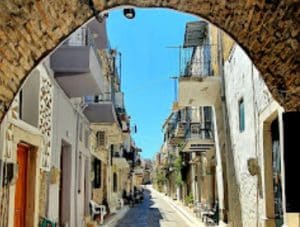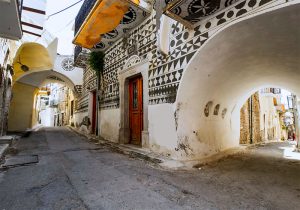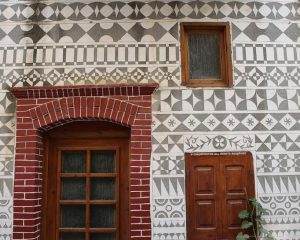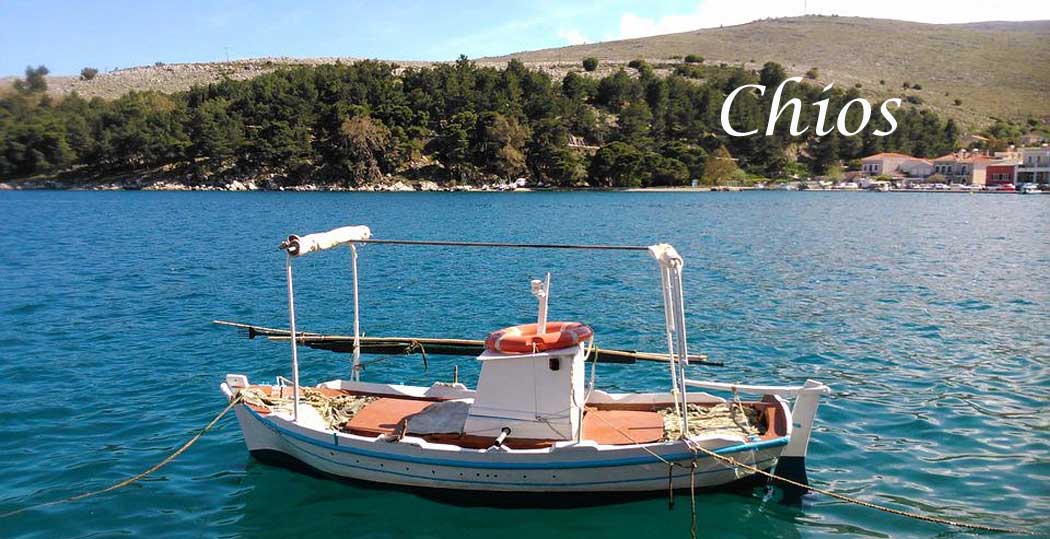The painted village of Pyrgi

Its trademark is the unique in the world geometric decoration of the exterior walls of the houses, the famous “scratches”. It is an impressive technique, where the carvings are done by hand and involves black sand that is whitened and then scraped.
This is how the famous black patterns on a white background, simple or complex, are created, which is kept alive to this day.
The houses are joined together and connected to the opposite ones with impressive arches, while the outer wall of the most distant buildings is a medieval enclosure.

In the center of the village there was a defensive tower, part of which is still preserved today, which functioned as a shelter in case of attack.
Pyrgi is the largest medieval village of Chios and is 25 kilometers from the city. Despite all the changes that time and human intervention have brought to it, Pyrgi is still today a living medieval legend.
Its urban structure and its architectural form are of great historical interest. Its fortification arrangement is representative for dealing with enemy attacks.
The church of the Holy Apostles, a copy of the catholicon of the New Monastery, is an excellently preserved Byzantine monument, with abundant ceramic decoration, jagged bands on the dome, with double marble colonnades and colorful bottle mouths in the masonry.

There are still the church of the Dormition of the Virgin, built in 1694, the church of Taxiarchis dating from 1680 and the monastery of Agios Georgios from the 19th century, all in very good condition.
But what fascinates the visitor at first glance are the Pyrgous houses with “scratches”, a type of facade decoration with geometric shapes in black and white. The technique is based on the black sand of the coating, which after being carefully whitened, is scratched following simple or complex patterns and gives black subjects on a white background reminiscent of Italian sgraffiti. This technique of exterior decoration was loved by the locals and for this reason they kept it alive until today.
